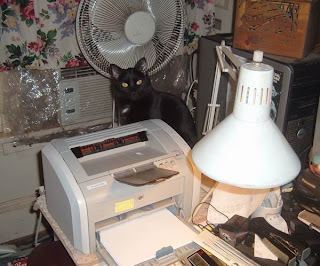 Tired of paying $10.00 for a gallon of Tide? Or even $7.00 for the cheapo brand? Here's a secret: the ingredients that make your laundry cost about $4.00 for a year and a half supply. The binding agent costs $3.00. The rest of it is tap water and advertising.
Tired of paying $10.00 for a gallon of Tide? Or even $7.00 for the cheapo brand? Here's a secret: the ingredients that make your laundry cost about $4.00 for a year and a half supply. The binding agent costs $3.00. The rest of it is tap water and advertising.You only need three ingredients:
Borax
Washing Soda (NOT baking soda)
3 Bars of Fel Naptha Soap (or Octagon) We find both at Krogers.
These supplies will allow you to make 15 gallons of soap (at 3 different intervals, which should last you approximately a year and a half, depending on size of your family)
Physical equipment you need:
5 gallon bucket with lid (we call them pickle buckets and we had plenty, but without lids, so I purchased a new one at Lowe's for $4.99. I recommend the one with the cushioned handle.)
Measuring cup
Stirring spoon (I bought a long handle wooden one that sits right on top of my laundry bucket)
Grater
Medium size sauce pan
 Peel the paper back on one bar of soap, and grate the soap. The smaller you grate it, the quicker it will melt.
Peel the paper back on one bar of soap, and grate the soap. The smaller you grate it, the quicker it will melt. Put the grated soap into the saucepan, cover with hot water and stir while over medium heat.
Put the grated soap into the saucepan, cover with hot water and stir while over medium heat.*DO NOT* walk off and leave this - it will boil over.
The soap will melt into a smooth yellow soup in approximately 5 minutes.
 Pour the hot soup into the bucket, adding it to the washing soda and borax. Stir.
Pour the hot soup into the bucket, adding it to the washing soda and borax. Stir. Add hot tap water (approx 3.5 to 4 gallons, or to within 4" of the top of the bucket), stirring as you add the water.
Add hot tap water (approx 3.5 to 4 gallons, or to within 4" of the top of the bucket), stirring as you add the water. That's it.
That's it.You're done.
Until it cools, it will be a smooth yellow liquid. After it cools, it will be a thicker yellow gel. I keep the wooden spoon on top of the bucket to give it an occasional stir. Even in our unheated laundry room, in the middle of January, it stays a creamy gel.
For each load of laundry, I use a cap from an older store-bought jug and use the same amount of homemade that I used of the store-bought.
This bucket above (minus 1 gallon I shared with a friend) lasted our family from July 2008 to yesterday (3-30-09). We average 4-5 loads of laundry a week.
The first time I made detergent it took me about an hour - this morning it took me about 25 minutes.
The total cost for the last batch, today's batch, and the next batch was $15.00. This includes the plastic bucket, measuring cup, wooden spoon (all reusable) plus the ingredients. The actual ingredients cost $7.00 - and that's 3 separate batches, lasting our family a year and a half.
(The washing soda and borax come in one size (approx 6 cups in each one), so I found it easier to go ahead and buy enough soap to match the soda and borax. I just stored them until it was time to make the next batch.)
If you want lavender scented detergent (or vanilla, or whatever), you can add essential oil to the mixture. I don't because I have asthma, and prefer unscented. The Fels-Naptha soap has a light, clean scent to it but it doesn't bother me in the least.
BTW- this is low-foaming. If you prefer lots of suds, you may not like this detergent. But you should also know that the "sudsing" is artificially added to commercial detergents, and has nothing to do with actual cleansing. Americans have been trained by Madison Avenue to think "suds" equals "cleaning".
Let's see, what else can we make for ourselves?



















































